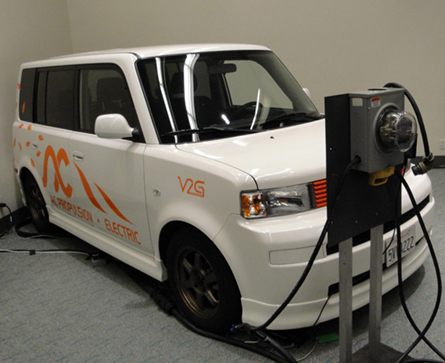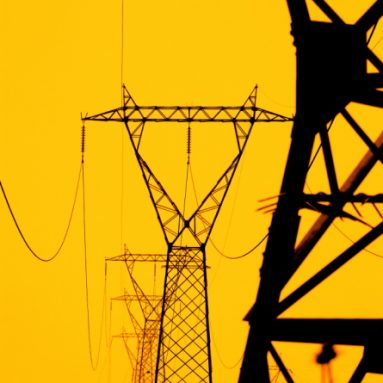Charged cars that would charge
Electric vehicles could give power to the grid
In the middle of February, Tom Gage drove his car right into a building in downtown San Diego. Gage didn’t crash his car; he was showing it off — to a crowd gathered at the annual meeting of the American Association for the Advancement of Science, or AAAS.
Gage’s car is unusual: It’s a plug-in electric car. Right now, most cars run on gasoline. Others, called hybrids, use a combination of gas and electricity — electricity provided by heavy-duty batteries in the car. And carmakers are racing to build an affordable all-electric car that both makes people happy and keeps the car companies in business. (Gage is president of AC Propulsion, a company that works on electric cars, so he has a head start.)
 |
|
Tom Gage’s electric car was on display during the annual meeting of the American Association for the Advancement of Science in February. |
| T. Siegfried |
His car is unusual for another reason: When he’s not driving it, he can plug it into a special meter that is connected to the grid. “The grid” is the network of power cables and power stations all over the United States that provide electricity to anyone in a particular place. With most outlets — such as the ones in your home — electricity comes out and provides power. When Gage’s car is plugged in to its special meter or outlet, electricity can go in the opposite way you might expect. Instead of coming out to charge the batteries, electricity can go in. The batteries can send power to the grid.
When you plug something in —a toaster, say — it needs electricity to perform its function. But when many people are all using power at the same time, the grid has to supply higher-than-normal amounts of electricity. Ideally, power companies would have some electricity stored and on hand for busy times.
 |
|
Power lines are one part of the grid that produces and transports electricity. |
| imagedepotpro/iStock |
But storing electricity for long periods of time is difficult and expensive. In order to get electricity to everyone who wants it during these busy times, a power company may need to spend money to buy new batteries or even to build power stations if demand is going to remain high. The people who use electricity ultimately pay these extra costs.
Gage’s idea is that if enough people use cars like his, their batteries can be used to give the grid an extra boost. And when the demand slows down, the grid can recharge the batteries in the cars. So someone who parks an electric car at one of these meters may not even notice a difference in the battery supply. Over the course of a day, the batteries “will have charged and discharged just the same amount,” Ken Huber told the audience at AAAS. Huber works at PJM Interconnection, a company involved with the buying and selling of electricity among different parts of the grid.
By leasing their car batteries to the grid, Gage says, people can earn money — maybe even $5 to $10 per day. While Gage talked to the scientists and reporters at the meeting, his car was plugged into the grid. A computer display showed how much power was being shuffled between the car and the grid over time.
The idea of this vehicle-to-grid system, or V2G, has been around for at least a decade, and mathematicians and economists have been figuring out how V2G could be profitable and energy-efficient.
However, there are still some problems that need to be figured out. Right now, it costs about $500 to adapt a car to share its battery power with the grid — a hefty price to pay to share power. Plus, the grid would need to know when the cars’ batteries are available for charging — which means people would have to work one more thing into their schedules.
Still, ideas such as Gage’s are a glimpse of the future, where creative scientists and engineers will have to find ways to help avoid a full-fledged energy crisis.
Going Deeper:
Perkins, Sid. 2010. “Sperm whales may team up to herd prey,” Science News, February 23. http://www.sciencenews.org/view/generic/id/56563/title/Sperm_whales_may_team_up_to_herd_prey
Sohn, Emily. 2008. “Hearing whales,” Science News for Kids, February 13. http://sciencenewsforkids.org/articles/20080213/Note2.asp







